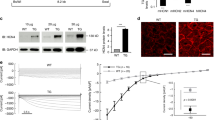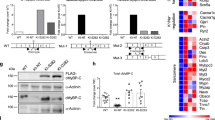Abstract
Diastolic heart failure (DHF), characterized by depressed myocardial relaxation performance and poor ventricular filling, is a distinct form of heart failure accounting for nearly half of the heart failure patients with otherwise normal systolic performance. Defective intracellular calcium (Ca2+) cycling is an important mechanism underlying impaired relaxation in DHF. Recently, genetic manipulation of Ca2+ handling proteins in cardiac myocytes has been explored for its potential therapeutic application in DHF. Specifically, ectopic expression of the skeletal muscle Ca2+ binding protein parvalbumin (Parv) has been shown to accelerate myocardial relaxation in vitro and in vivo. Parv acts as a unique “delayed” Ca2+ buffer during diastole by promoting Ca2+ transient decay and sequestration and corrects diastolic dysfunction in an energy-independent manner. This brief review summarizes the rationale and development of Parv gene transfer approaches for DHF, and in particular, discusses the divergent effects of Parv isoforms on cardiac myocyte Ca2+ handling and contractile function with the long-range goal of alleviating diastolic dysfunction in DHF.


Similar content being viewed by others
References
Henrotte, J. G. (1952). A crystalline constituent from myogen of carp muscles. Nature, 169, 968–969.
Kawasaki, H., Nakayama, S., & Kretsinger, R. H. (1998). Classification and evolution of EF-hand proteins. Biometals, 11, 277–295.
Pauls, T. L., Cox, J. A., & Berchtold, M. W. (1996). The Ca2+-binding proteins parvalbumin and oncomodulin and their genes: New structural and functional findings. Biochimica et Biophysica Acta, 1306, 39–54.
Heizmann, C. W. (1984). Parvalbumin, an intracellular calcium-binding protein; distribution, properties and possible roles in mammalian cells. Experientia, 40, 910–921.
Schwaller, B., Meyer, M., & Schiffmann, S. (2002). ‘New’ functions for ‘old’ proteins: The role of the calcium-binding proteins calbindin D-28k, calretinin and parvalbumin, in cerebellar physiology. Studies with knockout mice. Cerebellum, 1, 241–258.
Hou, T. T., Johnson, J. D., & Rall, J. A. (1991). Parvalbumin content and Ca2+ and Mg2+ dissociation rates correlated with changes in relaxation rate of frog muscle fibres. Journal of Physiology, 441, 285–304.
Heizmann, C. W., Berchtold, M. W., & Rowlerson, A. M. (1982). Correlation of parvalbumin concentration with relaxation speed in mammalian muscles. Proceedings of the National Academy of Sciences of the United States of America, 79, 7243–7247.
Hou, T. T., Johnson, J. D., & Rall, J. A. (1992). Effect of temperature on relaxation rate and Ca2+, Mg2+ dissociation rates from parvalbumin of frog muscle fibres. Journal of Physiology, 449, 399–410.
Muntener, M., Kaser, L., Weber, J., & Berchtold, M. W. (1995). Increase of skeletal muscle relaxation speed by direct injection of parvalbumin cDNA. Proceedings of the National Academy of Sciences of the United States of America, 92, 6504–6508.
Schwaller, B., Dick, J., Dhoot, G., Carroll, S., Vrbova, G., Nicotera, P., et al. (1999). Prolonged contraction–relaxation cycle of fast-twitch muscles in parvalbumin knockout mice. American Journal of Physiology, 276, C395–C403.
Gifford, J. L., Walsh, M. P., & Vogel, H. J. (2007). Structures and metal-ion-binding properties of the Ca2+-binding helix-loop-helix EF-hand motifs. The Biochemical Journal, 405, 199–221.
Berchtold, M. W., Brinkmeier, H., & Muntener, M. (2000). Calcium ion in skeletal muscle: Its crucial role for muscle function, plasticity, and disease. Physiological Reviews, 80, 1215–1265.
Bers, D. M. (2002). Cardiac excitation–contraction coupling. Nature, 415, 198–205.
Wahr, P. A., Michele, D. E., & Metzger, J. M. (1999). Parvalbumin gene transfer corrects diastolic dysfunction in diseased cardiac myocytes. Proceedings of the National Academy of Sciences of the United States of America, 96, 11982–11985.
Coutu, P., Bennett, C. N., Favre, E. G., Day, S. M., & Metzger, J. M. (2004). Parvalbumin corrects slowed relaxation in adult cardiac myocytes expressing hypertrophic cardiomyopathy-linked α-tropomyosin mutations. Circulation Research, 94, 1235–1241.
Hirsch, J. C., Borton, A. R., Albayya, F. P., Russell, M. W., Ohye, R. G., & Metzger, J. M. (2004). Comparative analysis of parvalbumin and SERCA2a cardiac myocyte gene transfer in a large animal model of diastolic dysfunction. American Journal of Physiology. Heart and Circulatory Physiology, 286, H2314–H2321.
Rodenbaugh, D. W., Wang, W., Davis, J., Edwards, T., Potter, J. D., & Metzger, J. M. (2007). Parvalbumin isoforms differentially accelerate cardiac myocyte relaxation kinetics in an animal model of diastolic dysfunction. American Journal of Physiology. Heart and Circulatory Physiology, 293, H1705–H1713.
Szatkowski, M. L., Westfall, M. V., Gomez, C. A., Wahr, P. A., Michele, D. E., DelloRusso, C., et al. (2001). In vivo acceleration of heart relaxation performance by parvalbumin gene delivery. The Journal of Clinical Investigation, 107, 191–198.
Michele, D. E., Szatkowski, M. L., Albayya, F. P., & Metzger, J. M. (2004). Parvalbumin gene delivery improves diastolic function in the aged myocardium in vivo. Molecular Therapy, 10, 399–403.
Schmidt, U., Zhu, X., Lebeche, D., Huq, F., Guerrero, J. L., & Hajjar, R. J. (2005). In vivo gene transfer of parvalbumin improves diastolic function in aged rat hearts. Cardiovascular Research, 66, 318–323.
Coutu, P., Hirsch, J. C., Szatkowski, M. L., & Metzger, J. M. (2003). Targeting diastolic dysfunction by genetic engineering of calcium handling proteins. Trends in Cardiovascular Medicine, 13, 63–67.
Coutu, P., & Metzger, J. M. (2002). Optimal range for parvalbumin as relaxing agent in adult cardiac myocytes: Gene transfer and mathematical modeling. Biophysical Journal, 82, 2565–2579.
Coutu, P., & Metzger, J. M. (2005). Genetic manipulation of calcium-handling proteins in cardiac myocytes. II. Mathematical modeling studies. American Journal of Physiology. Heart and Circulatory Physiology, 288, H613–H631.
Chien, K. R. (1999). Stress pathways and heart failure. Cell, 98, 555–558.
Cohn, J. N., Bristow, M. R., Chien, K. R., Colucci, W. S., Frazier, O. H., Leinwand, L. A., et al. (1997). Report of the National heart, lung, and blood institute special emphasis panel on heart failure research. Circulation, 95, 766–770.
Owan, T. E., & Redfield, M. M. (2005). Epidemiology of diastolic heart failure. Progress in Cardiovascular Diseases, 47, 320–332.
Chinnaiyan, K. M., Alexander, D., Maddens, M., & McCullough, P. A. (2007). Curriculum in cardiology: Integrated diagnosis and management of diastolic heart failure. American Heart Journal, 153, 189–200.
Kitzman, D. W., Gardin, J. M., Gottdiener, J. S., Arnold, A., Boineau, R., Aurigemma, G., et al. (2001). Importance of heart failure with preserved systolic function in patients ≥65 years of age. CHS Research Group. Cardiovascular Health Study. American Journal of Cardiology, 87, 413–419.
Zile, M. R., & Brutsaert, D. L. (2002). New concepts in diastolic dysfunction and diastolic heart failure: Part II: Causal mechanisms and treatment. Circulation, 105, 1503–1508.
Houser, S. R., Piacentino, V., III, Mattiello, J., Weisser, J., & Gaughan, J. P. (2000). Functional properties of failing human ventricular myocytes. Trends in Cardiovascular Medicine, 10, 101–107.
Arai, M., Matsui, H., & Periasamy, M. (1994). Sarcoplasmic reticulum gene expression in cardiac hypertrophy and heart failure. Circulation Research, 74, 555–564.
Wehrens, X. H., Lehnart, S. E., & Marks, A. R. (2005). Intracellular calcium release and cardiac disease. Annual Review of Physiology, 67, 69–98.
Pieske, B., Maier, L. S., Bers, D. M., & Hasenfuss, G. (1999). Ca2+ handling and sarcoplasmic reticulum Ca2+ content in isolated failing and nonfailing human myocardium. Circulation Research, 85, 38–46.
Minamisawa, S., Sato, Y., & Cho, M. C. (2004). Calcium cycling proteins in heart failure, cardiomyopathy and arrhythmias. Experimental and Molecular Medicine, 36, 193–203.
Molkentin, J. D. (2005). Locating heart failure. Nature Medicine, 11, 1284–1285.
del Monte, F., & Hajjar, R. J. (2003). Targeting calcium cycling proteins in heart failure through gene transfer. Journal of Physiology, 546, 49–61.
Hoshijima, M. (2005). Gene therapy targeted at calcium handling as an approach to the treatment of heart failure. Pharmacology and Therapeutics, 105, 211–228.
Most, P., Pleger, S. T., Volkers, M., Heidt, B., Boerries, M., Weichenhan, D., et al. (2004). Cardiac adenoviral S100A1 gene delivery rescues failing myocardium. Journal of Clinical Investigation, 114, 1550–1563.
Minamisawa, S., Hoshijima, M., Chu, G., Ward, C. A., Frank, K., Gu, Y., et al. (1999). Chronic phospholamban-sarcoplasmic reticulum calcium ATPase interaction is the critical calcium cycling defect in dilated cardiomyopathy. Cell, 99, 313–322.
Terracciano, C. M., Souza, A. I., Philipson, K. D., & MacLeod, K. T. (1998). Na+–Ca2+ exchange and sarcoplasmic reticular Ca2+ regulation in ventricular myocytes from transgenic mice overexpressing the Na+–Ca2+ exchanger. Journal of Physiology, 512(Pt 3), 651–667.
Schillinger, W., Janssen, P. M., Emami, S., Henderson, S. A., Ross, R. S., Teucher, N., et al. (2000). Impaired contractile performance of cultured rabbit ventricular myocytes after adenoviral gene transfer of Na+–Ca2+ exchanger. Circulation Research, 87, 581–587.
Pogwizd, S. M., & Bers, D. M. (2002). Na/Ca exchange in heart failure: Contractile dysfunction and arrhythmogenesis. Annals of New York Academy of Sciences, 976, 454–465.
Suarez, J., Belke, D. D., Gloss, B., Dieterle, T., McDonough, P. M., Kim, Y. K., et al. (2004). In vivo adenoviral transfer of sorcin reverses cardiac contractile abnormalities of diabetic cardiomyopathy. American Journal of Physiology. Heart and Circulatory Physiology, 286, H68–H75.
Seidler, T., Miller, S. L., Loughrey, C. M., Kania, A., Burow, A., Kettlewell, S., et al. (2003). Effects of adenovirus-mediated sorcin overexpression on excitation–contraction coupling in isolated rabbit cardiomyocytes. Circulation Research, 93, 132–139.
del Monte, F., Harding, S. E., Schmidt, U., Matsui, T., Kang, Z. B., Dec, G. W., et al. (1999). Restoration of contractile function in isolated cardiomyocytes from failing human hearts by gene transfer of SERCA2a. Circulation, 100, 2308–2311.
Neubauer, S. (2007). The failing heart—an engine out of fuel. The New England Journal of Medicine, 356, 1140–1151.
Huq, F., Lebeche, D., Iyer, V., Liao, R., & Hajjar, R. J. (2004). Gene transfer of parvalbumin improves diastolic dysfunction in senescent myocytes. Circulation, 109, 2780–2785.
Sakata, S., Lebeche, D., Sakata, N., Sakata, Y., Chemaly, E. R., Liang, L. F., et al. (2007). Restoration of mechanical and energetic function in failing aortic-banded rat hearts by gene transfer of calcium cycling proteins. Journal of Molecular and Cellular Cardiology, 42, 852–861.
Goodman, M., & Pechere, J. F. (1977). The evolution of muscular parvalbumins investigated by the maximum parsimony method. Journal of Molecular Evolution, 9, 131–158.
Eberhard, M., & Erne, P. (1994). Calcium and magnesium binding to rat parvalbumin. European Journal of Biochemistry, 222, 21–26.
Moeschler, H. J., Schaer, J. J., & Cox, J. A. (1980). A thermodynamic analysis of the binding of calcium and magnesium ions to parvalbumin. European Journal of Biochemistry, 111, 73–78.
del Monte, F., Lebeche, D., Guerrero, J. L., Tsuji, T., Doye, A. A., Gwathmey, J. K., et al. (2004). Abrogation of ventricular arrhythmias in a model of ischemia and reperfusion by targeting myocardial calcium cycling. Proceedings of the National Academy of Sciences of the United States of America, 101, 5622–5627.
Author information
Authors and Affiliations
Corresponding author
Rights and permissions
About this article
Cite this article
Wang, W., Metzger, J.M. Parvalbumin Isoforms for Enhancing Cardiac Diastolic Function. Cell Biochem Biophys 51, 1–8 (2008). https://doi.org/10.1007/s12013-008-9011-x
Received:
Accepted:
Published:
Issue Date:
DOI: https://doi.org/10.1007/s12013-008-9011-x




